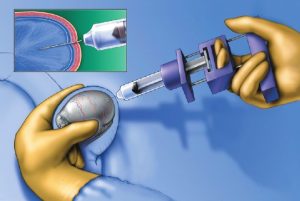The testicles are the most important male reproductive organ and are responsible for the production of sperm and sex hormones that create male characteristics. The testicles develop inside the fetus’s abdomen during the embryonic period, and with age, they go down a certain path and are placed inside the scrotum. If the descent of the testicle stops in any part of the natural path, it is called “undescended testicle” or “undescended testicle”.
This problem can be unilateral (80%) or bilateral. The treatment that doctors recommend in such cases is orchiopexy. Orchiopexy is performed as an open procedure (involving small incisions in the skin) or as a laparoscopic procedure (using instruments inserted into the body through small incisions). Sometimes, laparoscopy is combined with an incision to maximize results.
The reason for surgery is to transfer the undescended testicle into the scrotum
Orchiopexy is performed to correct an undescended testicle or cryptorchidism, a condition in which one or both testicles have not descended in their proper position in the scrotum. If left untreated, undescended testicles can lead to male infertility and increase the risk of testicular cancer. Undescended testicles are also associated with a hernia in the groin.
To minimize the risks, it is important to correct cryptorchidism in the child.
For adult men whose undescended testicles were not corrected in childhood, surgical options may be different. In such cases, the testicular tissue may not function and may increase the risk of testicular cancer. Therefore, the doctor may recommend complete removal of undescended testicles. This operation is called orchidectomy.

What are the complications of delaying orchiopexy?
Decreased fertility
Atrophy or shrinking of the testicles
Torsion or twisting of the testicles
Inguinal hernia
Damage to the location of the testicles
Tumor or cancer of the testicles: a scientific study has shown that if the orchiopexy operation is performed at the age of less than 10 years, the risk of cancer or testicular cancer is significantly reduced.
Benefits of orchiopexy
Fertility and health. Orchiopexy may help prevent male infertility. Studies show that it may help reduce your child’s chance of developing testicular cancer.
Increase self-esteem. As your child gets older, he may feel embarrassed if he only has one testicle in his scrotum. Most patients feel better about their body after the results of orchiopexy.
safety Orchiopexy is a relatively safe procedure with a low risk of complications or side effects. Most people return home the same day.
Less risk of injury. If the testicle is in the groin instead of the scrotum, it is more likely to injure the testicle. Injuries from sports, wearing seat belts on the legs, tight clothes and belts are more common.
